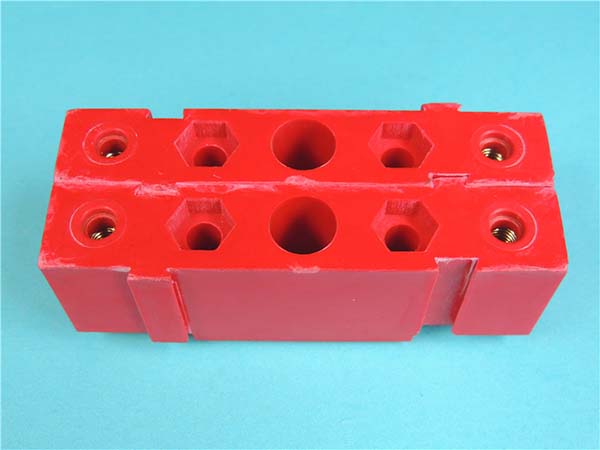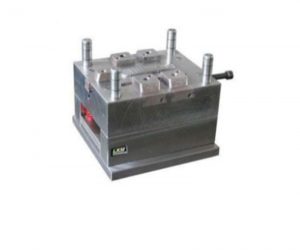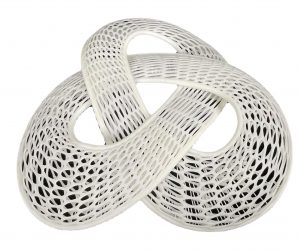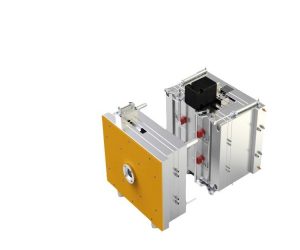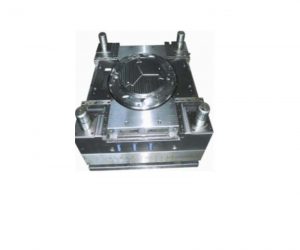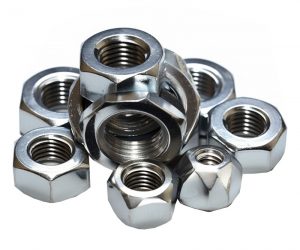Introduction
In the realm of materials science, bakelite has long been a subject of significant interest due to its unique properties and wide - ranging applications. For businesses involved in manufacturing processes that utilize bakelite, understanding its cost is crucial for maintaining profitability and competitiveness in the market.
Definition and Basics of Bakelite
Bakelite, also known as phenolic plastic, is a type of thermosetting plastic. It was the world's first synthetic plastic, invented by Leo Baekeland in 1907. This material is formed by the polymerization of phenol and formaldehyde under the influence of heat and pressure, often with the addition of fillers such as wood flour, asbestos, or cotton fibers.
One of the most prominent features of bakelite is its excellent electrical insulating properties. This makes it an ideal choice for applications in the electrical and electronics industries. For Yigu Technology example, it is commonly used in the production of electrical switches, sockets, and insulators. In electrical switches, bakelite's ability to prevent the flow of electricity ensures the safe operation of the switch, protecting users from electric shocks.
Bakelite also exhibits high heat resistance. It can withstand relatively high temperatures without significant deformation or degradation, which is why it is used in components of electrical appliances that generate heat during operation, like the housings of some electric irons or the insulating parts in high - power transformers.
Furthermore, it has good mechanical strength, making it suitable for use in mechanical parts. In the automotive industry, bakelite can be found in components such as distributor caps and ignition parts. These parts need to be durable and able to withstand the vibrations and mechanical stresses within an engine, and bakelite meets these requirements well.
Current Cost Situation of Bakelite
General Cost Range
The cost of bakelite can vary significantly depending on several factors, including its grade, type, and the scale of production. On average, the price of basic bakelite materials can range from \(5 to \)20 per kilogram.
Lower - grade bakelite, often used in less demanding applications such as some simple household items or non - critical electrical components, may be at the lower end of this range. For example, bakelite used in the production of basic electrical switch housings in large - scale manufacturing can cost around \(5 - \)8 per kilogram. These applications typically require basic mechanical and electrical properties, and the lower - grade bakelite can meet these requirements cost - effectively.
Higher - grade bakelite, which offers enhanced properties such as better heat resistance, higher mechanical strength, or improved electrical insulation, is more expensive. For instance, high - grade bakelite used in aerospace - related electrical insulation components or in high - power industrial electrical equipment can cost upwards of \(15 - \)20 per kilogram. In the aerospace industry, where components need to withstand extreme conditions, the high - grade bakelite's superior properties are essential, justifying its higher cost.
Cost Comparison with Similar Materials
When comparing the cost of bakelite with other similar materials, it is important to consider the specific properties and applications of each material. Let's take a look at a comparison with some common materials such as plastics and metals in the following Yigu Technology table:
| Material | Cost Range per Kilogram | Key Advantages in Cost - related Aspects | Key Disadvantages in Cost - related Aspects |
| Baquelite | \(5 - \)20 | Good cost - performance for applications requiring electrical insulation and moderate mechanical strength. Its cost is relatively stable compared to some materials whose prices are highly volatile due to raw material market fluctuations. | More expensive than some commodity plastics in large - scale, low - performance applications. Higher production costs in some complex manufacturing processes compared to simpler plastics. |
| Polietileno (PE) | \(1 - \)5 | One of the cheapest plastics, suitable for mass - production of low - cost items like plastic bags, bottles, and some basic household plastics. | Limited in terms of heat resistance and mechanical strength, not suitable for applications where high - performance properties are required, so may need to be replaced with more expensive materials in such cases. |
| Aluminum | \(2 - \)5 (depending on purity and form) | Good thermal and electrical conductivity, lightweight. Cost - effective for applications where these properties are needed, such as in the automotive and electrical industries for parts like heat sinks and electrical conductors. | Higher cost compared to some plastics for applications that do not require its specific properties. Surface treatment costs may be added for some applications to prevent corrosion. |
| Aço | \(0.5 - \)3 (carbon steel, basic grades) | Economical for large - scale structural and mechanical applications due to its high strength. Widely available and easy to process in large quantities. | Prone to corrosion in many environments, which may require additional costs for corrosion protection methods such as painting or galvanizing. Heavier than some materials like aluminum, which may increase transportation and handling costs in some applications. |
In applications where electrical insulation is a primary requirement and the mechanical strength requirements are not extremely high, bakelite can be more cost - effective than metals. For Yigu Technology example, in the production of small - scale electrical insulators, using bakelite instead of metal can significantly reduce the cost, as metals would require additional insulating coatings or treatments to achieve the same level of electrical insulation.
However, in applications where high - volume production of simple, low - performance products is involved, such as disposable plastic products, plastics like polyethylene are much more cost - effective than bakelite. The low cost of polyethylene allows for the production of large quantities of items at a minimal cost per unit, which is difficult to achieve with bakelite due to its relatively higher cost per kilogram and more complex manufacturing processes in some cases.
Strategies to Reduce Bakelite Cost
For manufacturers looking to manage their production costs effectively, there are several strategies that can be employed to reduce the cost of using bakelite in their manufacturing processes. These strategies cover various aspects, from raw material procurement to product design.
Raw Material Procurement Strategies
Long - term Contracts with Suppliers
One effective way to manage the cost of bakelite raw materials is to establish long - term contracts with reliable suppliers. By entering into long - term agreements, manufacturers can secure a stable supply of phenol and formaldehyde, the key raw materials for bakelite production. This stability helps in avoiding sudden price hikes that can occur due to short - term market fluctuations.
For Yigu Technology example, a large - scale electrical component manufacturer might sign a three - year contract with a phenol supplier. In this contract, they can negotiate a fixed price for phenol over the first year, with a pre - agreed - upon price adjustment formula for the subsequent two years. This formula could be based on factors such as the price of crude oil (since phenol is often derived from petroleum - based products) or the overall inflation rate in the chemical industry.
Moreover, long - term contracts can also give manufacturers priority in the supplier's production schedule. This ensures that during periods of high demand for raw materials, the manufacturer still receives its required quantity of phenol and formaldehyde on time, reducing the risk of production disruptions that could lead to additional costs.
Recycling and Reusing Materials
Another approach to reducing the cost of bakelite production is through recycling and reusing materials. With the increasing focus on environmental sustainability, recycling bakelite waste not only helps in cost - reduction but also in meeting environmental responsibilities.
There are several methods for recycling bakelite. One common method is mechanical recycling, where waste bakelite products are first shredded into small pieces. These pieces are then processed to remove any impurities, such as other plastics or metals that might have been mixed with the bakelite. After purification, the recycled bakelite can be re - compounded with virgin materials or used on its own in the production of new bakelite - based products.
Process Optimization
Improving Production Efficiency
Enhancing production efficiency is a crucial strategy for reducing the cost of bakelite production. One way to achieve this is by investing in modern and advanced production equipment. For example, upgrading to high - speed injection molding machines can significantly increase the production rate of bakelite products.
A traditional injection molding machine might produce 50 units of a small bakelite electrical component per hour. However, a new, high - speed model could potentially produce 100 units per hour. This doubling of production output reduces the labor cost per unit, as the same number of workers can now produce more products in the same amount of time.
Moreover, advanced equipment often comes with better control systems. These systems can precisely regulate the temperature, pressure, and injection speed during the bakelite molding process. This precision leads to fewer defective products, as the risk of under - or over - curing the bakelite is minimized. For example, in a production run of 1000 bakelite parts, an older machine might produce 50 defective parts due to inconsistent processing conditions. With the new, advanced equipment, the number of defective parts could be reduced to 10, saving the cost of rework or scrapping.
Lean Manufacturing Principles
Applying lean manufacturing principles in the production of bakelite can also lead to substantial cost savings. Lean manufacturing focuses on eliminating waste in all forms, including overproduction, waiting times, excess inventory, and unnecessary processing steps.
In a bakelite production facility, overproduction can be a significant source of waste. For example, if a production plan is not accurately aligned with the market demand, the company might produce more bakelite products than it can sell in a given period. These excess products not only tie up capital in inventory but also take up valuable storage space. By implementing a just - in - time (JIT) production system, the company can produce bakelite products only when there is a confirmed order, reducing the risk of overproduction.
Waiting times can also be a hidden cost in bakelite production. For instance, if workers are waiting for raw materials to arrive at the production line due to poor supply chain management, or if machines are idle because of maintenance issues, valuable production time is lost. By streamlining the supply chain and implementing a proactive maintenance program, these waiting times can be minimized.
Excess inventory of raw materials or finished products can also increase costs. Maintaining large inventories of phenol and formaldehyde incurs storage costs and the risk of material degradation over time. By optimizing inventory levels based on accurate demand forecasting, the company can reduce these costs.
Finally, eliminating unnecessary processing steps can improve production efficiency. For example, if a particular finishing process on a bakelite product does not add significant value to the customer but consumes time and resources, it can be removed or simplified without sacrificing product quality.
Product Design Adjustments
Reducing Material Usage without Sacrificing Performance
In the product design phase, engineers can optimize the structure of bakelite - based products to reduce the amount of material used without compromising on performance. For example, in the design of a bakelite electrical enclosure, through computer - aided design (CAD) and finite - element analysis (FEA), engineers can identify areas where the thickness of the bakelite can be safely reduced.
If the original design of the enclosure has a uniform thickness of 5 mm, FEA might reveal that in some areas, a thickness of 3 mm would still provide sufficient mechanical strength and electrical insulation. By reducing the thickness in these non - critical areas, the amount of bakelite used in each enclosure can be decreased by, say, 20%. This reduction in material usage directly translates into cost savings, especially when producing large quantities of the product.
Another approach is to use lightweight design techniques. For example, incorporating honeycomb or lattice structures inside the bakelite product can increase its strength - to - weight ratio. A bakelite component with a honeycomb structure can have the same mechanical strength as a solid component but with a much lower material volume.
Substituting with Lower - Cost Alternatives in Some Applications
In certain applications, it might be possible to substitute bakelite with lower - cost alternatives, either partially or completely. For example, in some non - critical electrical applications where the heat resistance requirements are not extremely high, a less expensive thermoplastic with good electrical insulating properties could be used instead of bakelite.
In the production of some small - scale consumer electronics, such as low - power chargers, a cheaper polypropylene - based plastic with added flame - retardant additives can be used in place of bakelite for the housing. Polypropylene is generally much less expensive than bakelite, and with the right additives, it can meet the basic electrical safety and mechanical requirements of the charger housing.
However, when considering substitution, it is essential to conduct thorough testing to ensure that the alternative material does not negatively impact the product's performance, durability, or safety. For example, if a substitute material has a lower heat resistance than bakelite, it might not be suitable for applications where the product is likely to be exposed to high temperatures during normal use or in case of a malfunction.
Conclusion
In Yigu Technology conclusion, understanding the cost of bakelite is of vital importance for businesses in various industries that rely on this material. Bakelite's unique properties, such as its excellent electrical insulation, high heat resistance, and good mechanical strength, make it a preferred choice in many applications, from electrical components to automotive parts. However, its cost can vary significantly based on factors like raw material prices, production volume, and product grade.
The general cost range of bakelite, which spans from \(5 to \)20 per kilogram, reflects the diversity in its quality and applications. When compared to other materials like polyethylene, aluminum, and steel, bakelite offers a distinct cost - performance profile. It is more cost - effective than metals in applications where electrical insulation is crucial and mechanical strength requirements are not overly high, yet more expensive than some commodity plastics in large - scale, low - performance applications.
